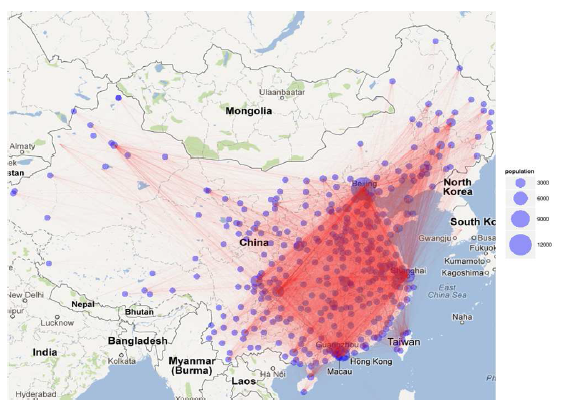Data Mining Reveals the Surprising Behavior of Users of Dating Websites
When it comes to finding the perfect mate, people aren’t as fussy as they make out, say researchers studying behavior on online dating sites.
There are 54 million single people in the U.S. and around 40 million of them have signed up with various online dating websites such as match.com and eHarmony. As a result, about 20 percent of current romantic relationships turn out to have started online.
So it’s no surprise that there is intense interest in understanding the behavior of those who sign up and in improving systems designed to create a successful match.
Today, Peng Xia at the University of Massachusetts Lowell and a few pals publish the results of their analysis of the behavior of 200,000 people on an online dating site. Their conclusions are fascinating.
This story is only available to subscribers.
Don’t settle for half the story.
Get paywall-free access to technology news for the here and now.
Subscribe now
Already a subscriber?
Sign in
They say most people behave more or less exactly as social and evolutionary psychology predicts: males tend to look for younger females while females put more emphasis on the socioeconomic status of potential partners.
But they also have a surprise. They say that when it comes to choosing partners, both men and women’s actual behavior differs significantly from their stated tastes and preferences which they outline when they first sign up. In other words, people are not as fussy about partners as they make out.
Xia and co analyzed a dataset associated with 200,000 individuals from the Chinese dating website www.baihe.com, which has over 60 million registered users. Each person’s profile contained information about their gender, age, location, body type, occupation, marriage and children status and so on. It also listed the dates of all the messages they sent during an eight week period in 2011, as well as the receiver of the message and whether they responded.
In their first week of membership to this dating site, men send on average 15 or 20 messages and continue to send them at that rate. By contrast, women send twice as many messages in the first week but this rate drops dramatically in the second week to well below the rate men send and stays at this much lower level.
In general, men send far more messages but get fewer replies than women. And women are more likely to receive unsolicited messages and less likely to reply. Both sexes reply quickly to messages when they do reply, taking on average about nine hours to pen a response.
So what kind of partners are people looking for? The general picture is unsurprising. “Males tend to look for younger females while females place more emphasis on socioeconomic status such as the income and education level of a potential date,” say Xia and co.
But when they compared each person’s preferences with the attributes of those he or she chose to message, Xia and co found a surprise. “A fairly large fraction of messages are sent to or replied to users whose attributes do not match the sender or receiver’s stated preferences,” they say.
In particular, women tend to deviate much further from their stated preferences than men. That’s particularly true of attributes such as age, height, and location. However, they are much less flexible than men about marital status and number of children.
What’s interesting about these discoveries is that when it comes to certain categories such as height, education level, people’s actual choices are essentially random. These choices are indistinguishable from random selections, say Xia and co.
By contrast, people’s choices in categories such as age difference and geographic distance accurately reflect their stated preferences.
So it seems that people care deeply about the age of their potential partners and where they’re from but not about how tall they are, how much they earn, or their education level.
Nevertheless, the general trend is that people tend to reply to others who match their stated preferences. “We observe that for both males and females, the reply probability is larger when the sender’s attribute matches the receiver’s stated preference,” they say.
Of course, there are likely to be significant differences between certain aspects of dating behavior in China compared to other parts of the world. For example, there is very little ethnic variety in China—98.9 percent of people in the data set were Han Chinese, the ethnic majority in China. What’s more, 97 percent claim to be nonreligious. That’s a group very unlike the mix found in other parts of the world.
The bottom line here is that people prefer dates that match their stated preferences but actually aren’t too fussy when it comes to many of these categories. That’s information that many dating sites might like to explore in more detail when designing the questions they ask and the algorithms that link one person to another.
And with the online dating business generating over $1 billion in revenue per year and becoming a large part of single people’s lives, there will surely be great interest in improving the way the services work.
Ref: arxiv.org/abs/1401.5710 : Who is Dating Whom: Characterizing User Behaviors of a Large Online Dating Site
